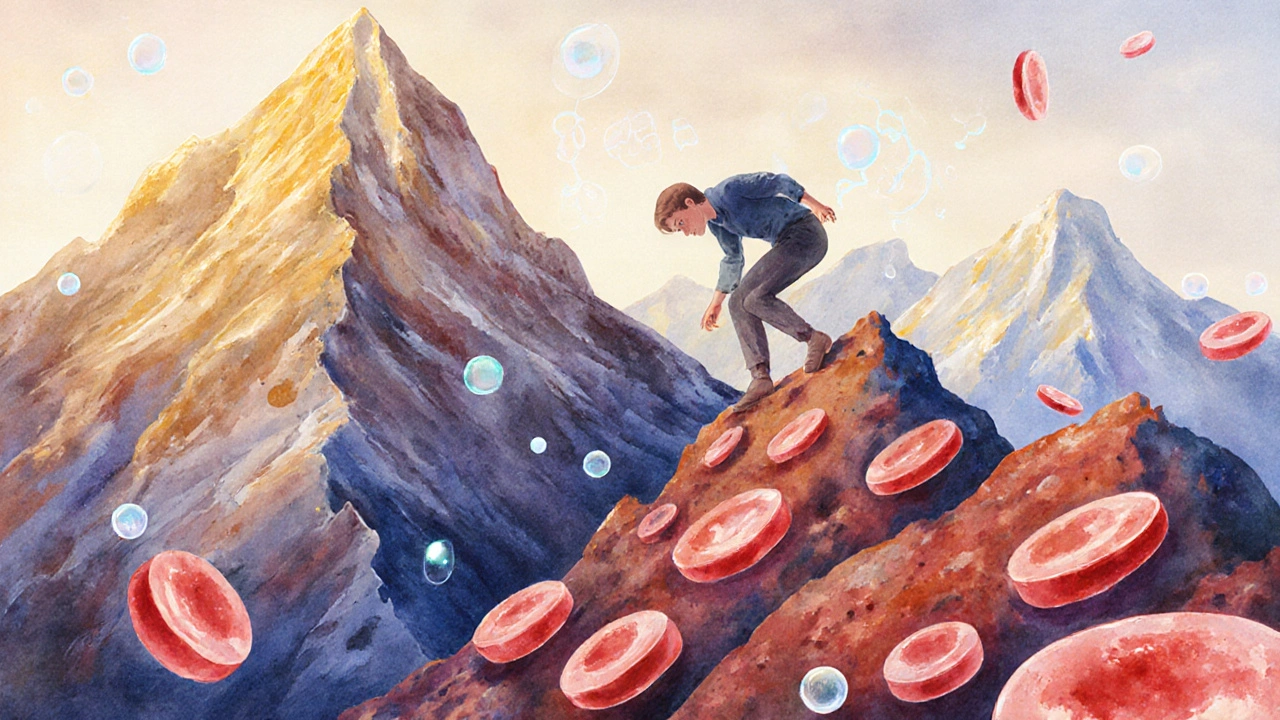Iron Deficiency Anemia: Causes, Symptoms, and Management
When dealing with iron deficiency anemia, a condition where the blood lacks enough healthy red cells due to insufficient iron. Also known as iron‑deficiency–related anemia, it shows up as fatigue, pale skin, and shortness of breath. Below, you’ll get a clear picture of why it happens and what you can do about it.
One of the first things to check is hemoglobin, the protein that carries oxygen in red blood cells. Low hemoglobin is the hallmark of anemia and tells doctors how severe the iron shortage is. Another key player is ferritin, the storage form of iron; low ferritin often signals that body stores are depleted before hemoglobin drops. To refill those stores, most doctors recommend iron supplements, which come in pills, liquids, or even IV forms for tougher cases. Finally, the food you eat matters—a diet rich in heme iron from meat and non‑heme iron from beans, leafy greens, and fortified grains helps keep the whole system running.
What Triggers Iron Deficiency?
Blood loss tops the list of triggers. Heavy menstrual periods, gastrointestinal bleeding from ulcers or colon polyps, and even regular blood donations can drain iron quickly. Chronic illnesses like inflammatory bowel disease or celiac disease also interfere with iron absorption, making it harder to replenish what you lose. Pregnancy raises iron demand dramatically because the growing baby needs a solid blood supply, so many expectant mothers end up anemic without extra supplementation.
Dietary habits play a big role, too. Vegetarian or vegan diets can provide enough iron, but the non‑heme iron they contain isn’t absorbed as well as the heme iron from animal sources. Pairing iron‑rich foods with vitamin C—like adding lemon juice to spinach—can boost absorption. On the flip side, coffee, tea, and calcium‑rich foods can block iron uptake if eaten at the same time.
Genetics isn’t far behind. Some people inherit conditions like hereditary hemochromatosis, which actually cause iron overload, but variations can also affect how efficiently the gut pulls iron into the bloodstream. If you’ve tried dietary changes and still feel weak, a simple blood test can reveal whether a hereditary factor is at play.
Age matters as well. Children and teenagers grow fast, needing more iron for muscle and brain development. Older adults often face reduced stomach acid, which makes iron absorption harder. In both groups, a missed diagnosis can stunt growth in kids or worsen fatigue in seniors.
Medications can sneak in as culprits. Antacids, proton‑pump inhibitors, and certain antibiotics lower stomach acid, which is essential for converting iron into an absorbable form. If you’re on any of these drugs, talk to your doctor about timing your iron intake to avoid clashes.
Understanding the root cause helps you target treatment precisely. For example, if a gastrointestinal ulcer is bleeding, fixing the ulcer stops the iron loss. If the issue is poor absorption, a higher dose of oral iron or an IV infusion might be needed. Tailoring the approach saves time and reduces side effects.
Speaking of side effects, oral iron can cause stomach upset, constipation, or dark stools. Starting with a low dose and gradually increasing it often eases these problems. Taking the supplement with food can reduce irritation, though it may also modestly lower absorption—so find the balance that works for you.
When oral options fail, doctors turn to intravenous iron. IV iron delivers a large amount directly into the bloodstream, bypassing the gut entirely. It’s especially useful for patients with inflammatory bowel disease, chronic kidney disease, or those who can’t tolerate pills. The procedure is quick, and most people feel better within days.
Monitoring progress is essential. A repeat blood test after a few weeks checks hemoglobin and ferritin levels. You should see steady improvement; if not, the doctor may adjust the dose or investigate other underlying issues. Consistency is key—stop taking the supplement too soon, or the anemia could bounce back.
Prevention is the best medicine. Regular check‑ups, especially for at‑risk groups like pregnant women, athletes, and people with chronic illnesses, catch low iron early. Incorporating iron‑rich foods daily, pairing them with vitamin C, and avoiding coffee or calcium around meals keeps the balance in check.
Now that you know what iron deficiency anemia looks like, why it happens, and how to treat it, you’ll find a mix of practical tips, deep‑dive guides, and real‑world stories in the posts below. Dive in to discover the right approach for your situation and take control of your health.

